By Dan Weisz
Another seasonal visitor we have to southern Arizona and to the Foothills is the Lesser Nighthawk. During the day, this highly camouflaged bird sits motionless either on the ground or on a branch. After sunset, as the air begins to cool, the birds take flight. I came across this bird just a short walk in the desert from my home.
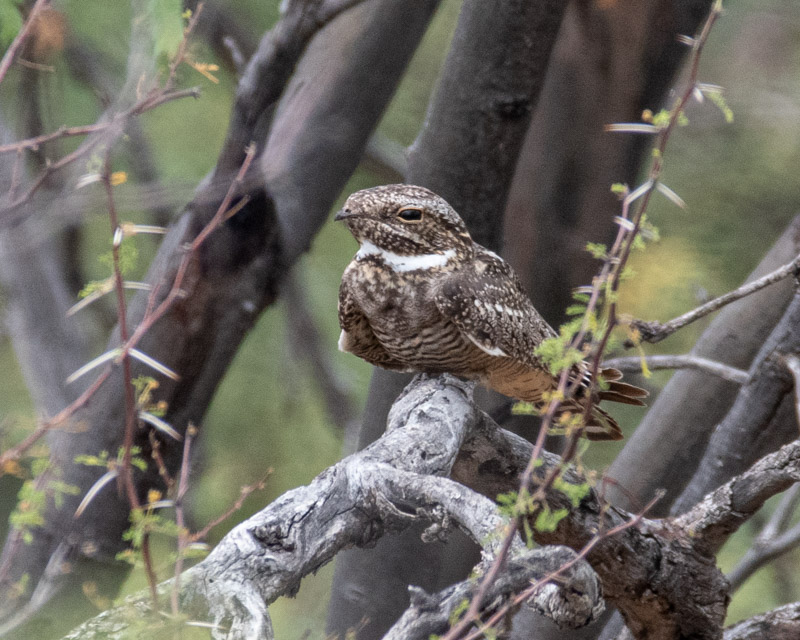
The sound of the Lesser Nighthawk has been described as a “gurgling laugh”. If you are outside of the city, you can hear these birds in the air as they fly. Listen to their trill here: https://www.xeno-canto.org/560046 For atmosphere, play this sound after sunset as you sit on your porch!!
The best time to see a Lesser Nighthawk is after sunset and just before dusk. If you have a good expansive view of the sky, you may see these birds dipping and fluttering through the sky often low to the ground. They move quickly and buoyantly, searching for insect swarms. You can also see them near street lights and in parks where insects are attracted to the lights.
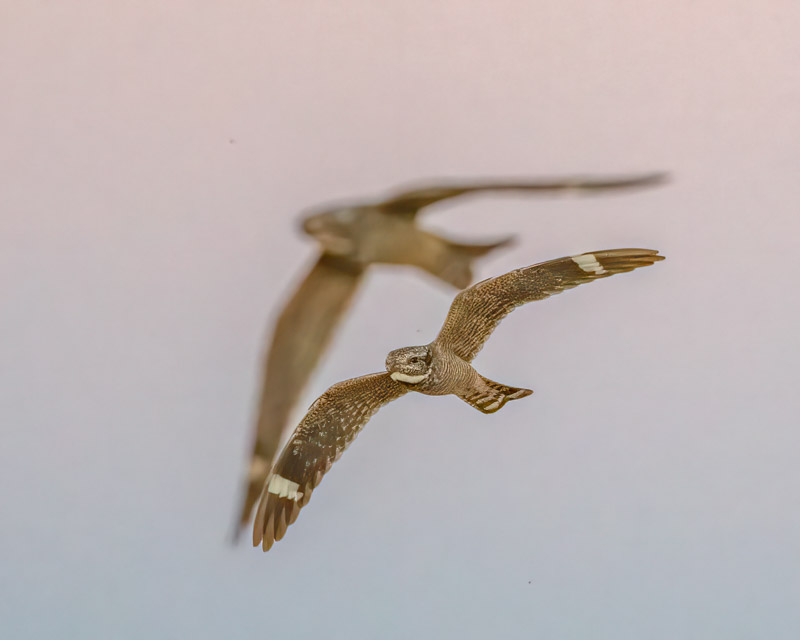
This range map shows where Lesser Nighthawks appear during our summers (breeding season). Most of the rest of the United States sees the Common Nighthawk, another summer visitor.
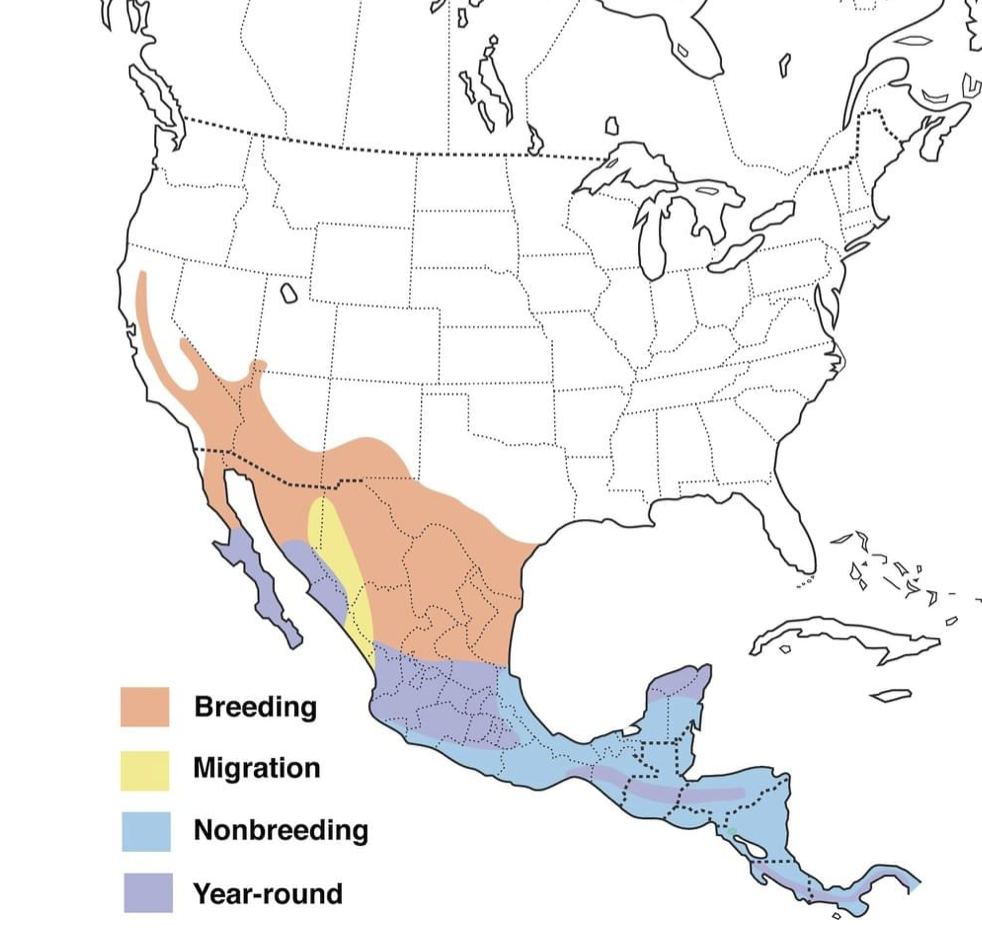
Lesser Nighthawks are long-winged and long-tailed. They have a white band across the neck and males have a white bar across their wingtips and a white band across the tail. Nighthawks are not related to “hawks”, they are more related to whip-poor-wills. They somewhat resemble falcons and perhaps that’s how the “hawk” part of their name originated. Also, the verb “to hawk” means to hunt on the wing for food, and these birds do hawk for insects. Lesser Nighthawks are smaller and quieter birds than Common Nighthawks, therefore “lesser”.
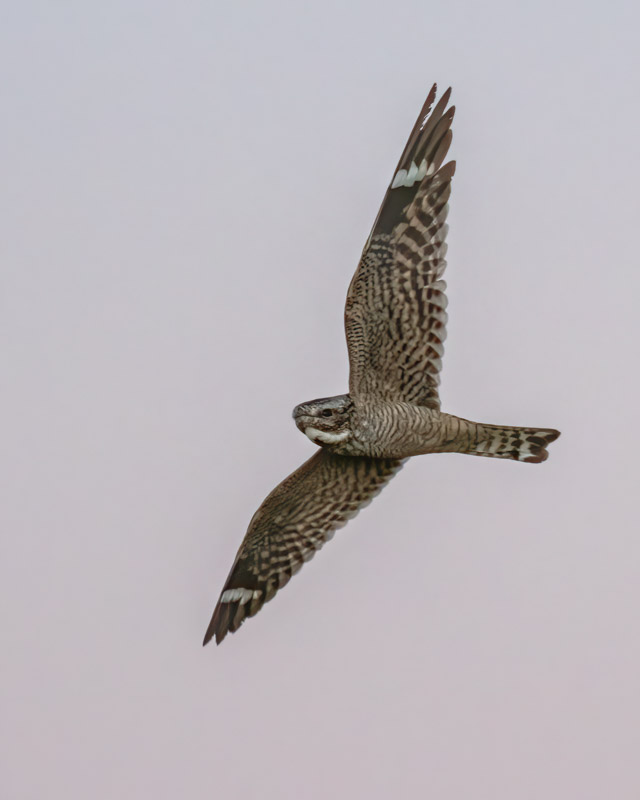
One evening after sunset I was driving home from the agricultural fields where I was viewing the Burrowing Owls. A huge number of Lesser Nighthawks came to one of the farm fields and foraged through the air for the longest time. It was amazing to see the number of these birds in the same place. The bird below is a female based on the lack of the tail band and the more buffy and smaller wing bar.
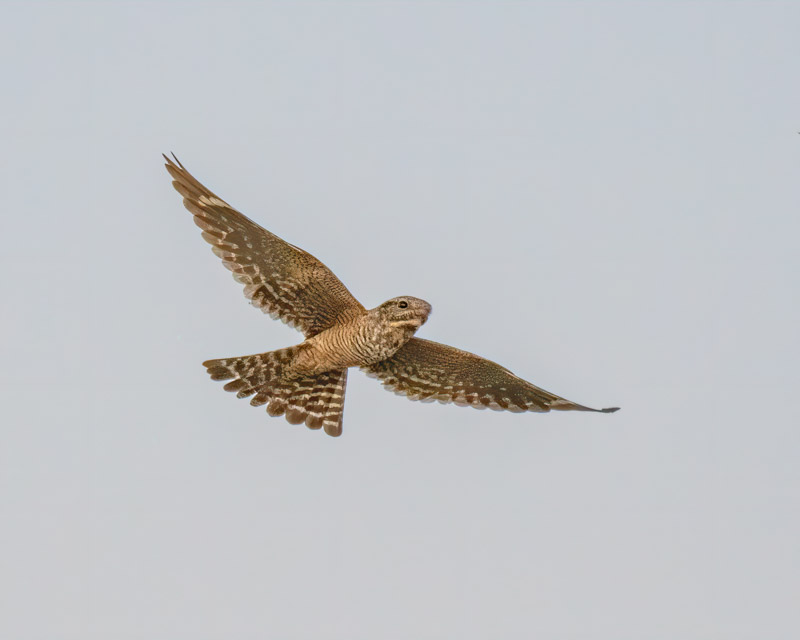
allaboutbirds.org describes their patrolling the skies as alternating “snappy wingbeats, fast flutters, and short glides with the wings held in a V. “
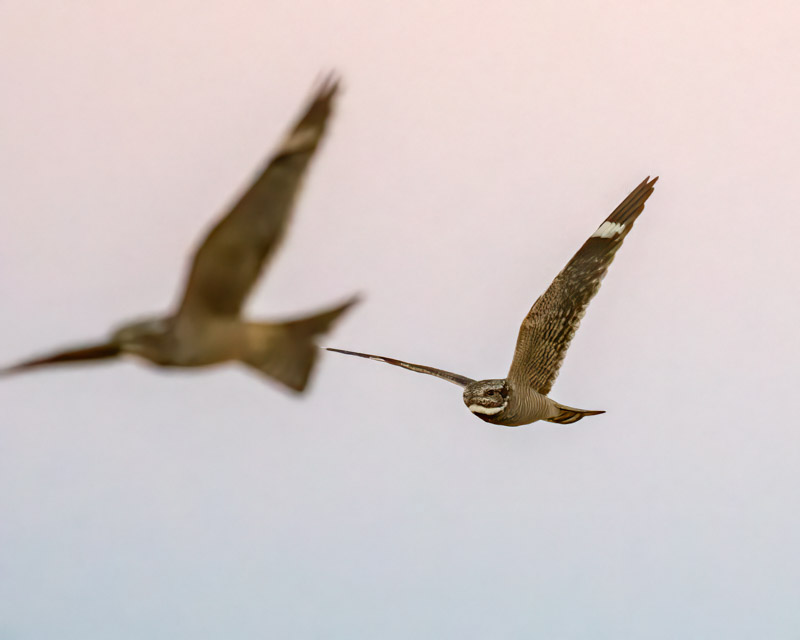
The sky was very dark but there was some color in parts of the sky due to the setting sun as this bird flew low with distant mountains in the background.
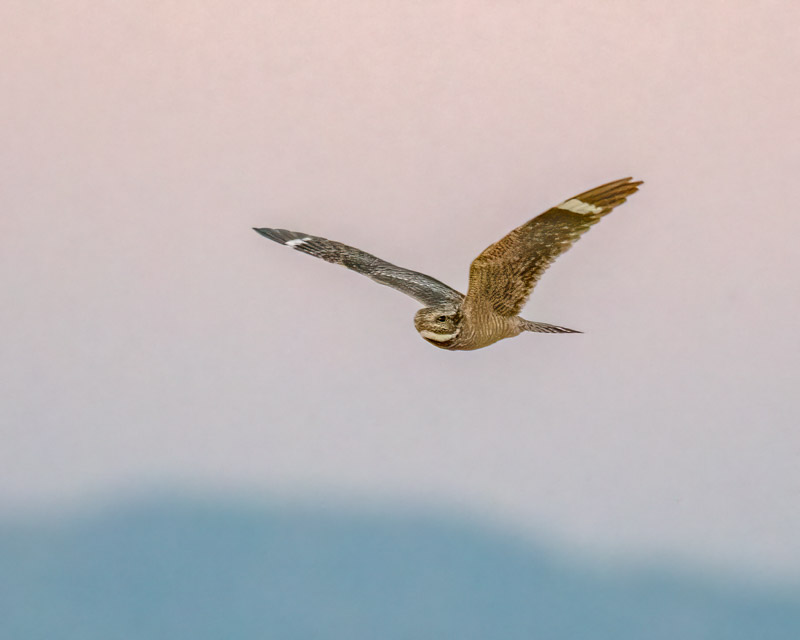
The shot below was taken very late at dusk and difficult to process so please excuse the graininess and color. What I do like is that it depicts the Lesser Nighthawk’s feeding technique. It scoops aerial insects mid-air with a wide open mouth. As it flies through the air, it eats whatever lands in its mouth.
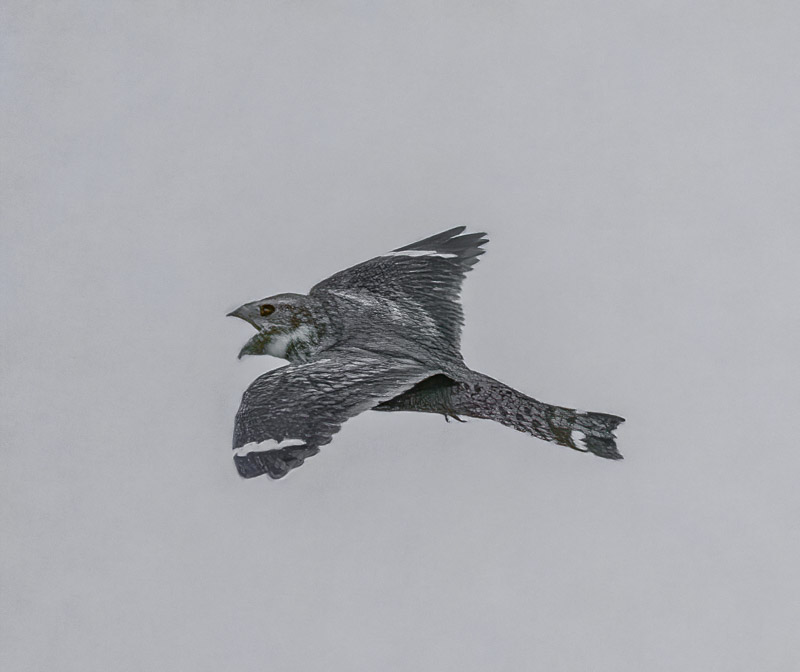
This Lesser Nighthawk was seen in the desert area near my house. I was walking through the desert when I startled this bird. It flew to a nearby tree and perched, watching me alertly. You can see the bird’s very tiny beak. (This is the same bird pictured in the first photo of this set.)
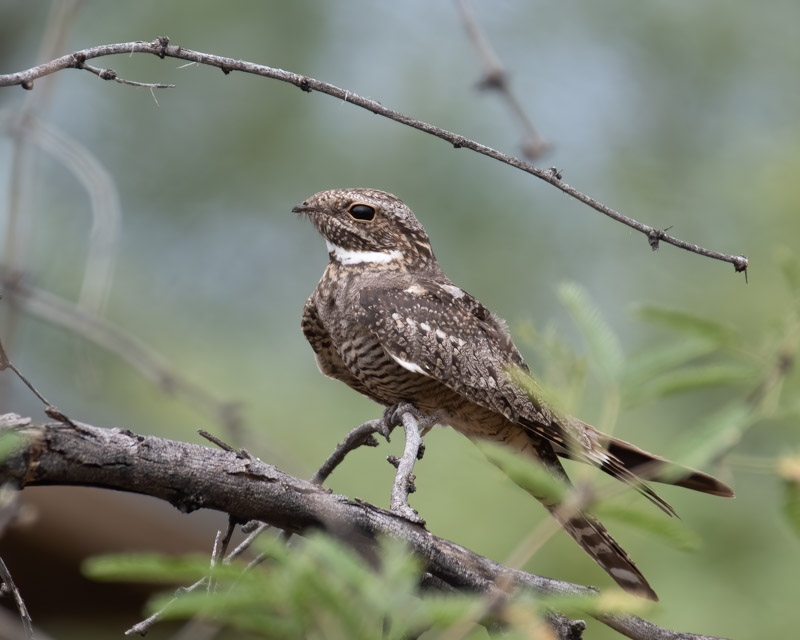
So tonight if you live in Tucson or the Southwest, after sunset go sit out on your porch, click on the link below, and look up at the skies. You might just see something special.
https://www.xeno-canto.org/358758
